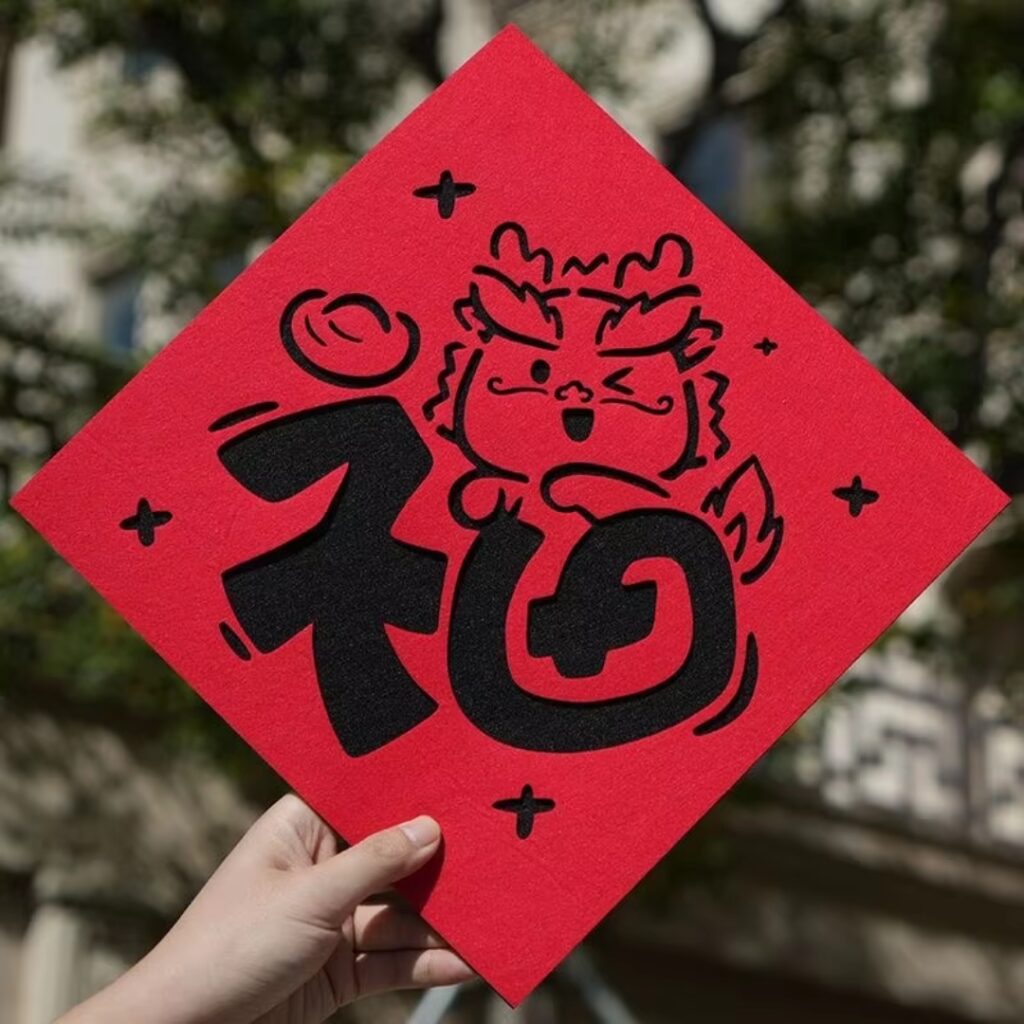A Chinese knot (中国结, Zhōngguó jié) is a traditional decorative handicraft art deeply rooted in Chinese culture. Made from a single length of cord, skillfully woven into intricate shapes and forms, the knot is more than a craft—it’s a cultural symbol of unity, eternity, and prosperity.
Chinese knots are symmetrical, typically using red thread to signify luck and happiness. These knots have been used for centuries in clothing, jewelry, home decor, and ceremonial objects. Each shape carries a symbolic meaning, often associated with good fortune, longevity, and love.
Historical Background of Chinese Knotting
The origins of Chinese knotting date back over 2,000 years, with roots in the Tang (618–907 AD) and Song (960–1279 AD) dynasties. The practice gained widespread popularity during the Ming and Qing dynasties, evolving into a highly sophisticated form of folk art.
Archaeological finds from the Warring States period have unearthed artifacts showing early versions of knot patterns on bronze and jade items, illustrating that knotting had both aesthetic and spiritual significance.
Types of Traditional Chinese Knots
| Knot Name | Symbolic Meaning | Typical Use |
|---|---|---|
| Double Coin Knot | Wealth, prosperity | Home decor, gifting |
| Good Luck Knot | Blessings, protection | New Year decorations |
| Button Knot | Harmony, stability | Clothing, accessories |
| Cloverleaf Knot | Love, romance | Wedding decor, tokens |
| Pan Chang Knot | Infinity, continuity | Taoist rituals, feng shui |
| Mystic Knot | Endless cycle of life | Amulets, spiritual objects |
These knots are not just designs—they embody Chinese philosophy, spirituality, and cultural values passed down through generations.
Symbolism Behind the Chinese Knot
Each Chinese knot holds deep symbolism, often combining:
-
Color: Red is most common for joy, yellow for royalty, green for harmony.
-
Shape: Circular or figure-eight shapes denote eternity.
-
Patterns: Some resemble flowers, animals, or ancient characters.
Common Symbolic Themes:
-
Luck & Fortune – Knots are often gifted during Lunar New Year and weddings.
-
Protection – Used in talismans to ward off evil.
-
Unity – Ties families, couples, and friends through shared blessings.
Chinese Knot in Modern Culture
While rooted in tradition, Chinese knots have become popular in modern design:
-
Fashion: Applied to qipaos, jackets, handbags, and accessories.
-
Interior Design: Hung in homes as wall art, curtains, and tassels.
-
Souvenirs: Popular gifts for tourists symbolizing Chinese culture.
-
Digital Art: Patterns inspire modern digital motifs and 3D printing designs.
Fun Fact:
The Beijing Olympics 2008 incorporated Chinese knot elements in branding to reflect cultural pride and global connection.
Crafting the Chinese Knot: A Step-by-Step Introduction
Making a Chinese knot can be both meditative and artistic. Here’s a basic DIY guide for beginners:
Materials You’ll Need:
-
Nylon or silk cord (red is traditional)
-
Scissors
-
Ruler
-
Lighter (for sealing ends)
-
Patience and creativity
Steps to Make a Basic Double Coin Knot:
-
Cut a 100 cm cord
-
Fold the cord in half to find the center.
-
Loop the left side into a circle, keeping it flat.
-
Cross the right side over, weaving it under and over the loop.
-
Tighten evenly on both sides, ensuring symmetry.
-
Seal the ends with heat to avoid fraying.
This knot is a favorite for bracelets, pendants, or decorative hangings.
Why Chinese Knots Make Powerful Gifts
Chinese knots are highly customizable, making them a thoughtful and symbolic gift. They’re perfect for:
-
Weddings: Represent eternal love and harmony.
-
New Year: Bring good luck and prosperity.
-
Business Openings: Symbolize smooth ventures.
-
Birthdays: Convey wishes of longevity and peace.
They can be paired with jade, coins, or charms to enhance their meaning.
Cultural Etiquette: When & How to Use Chinese Knots
| Occasion | Recommended Knot | Message Conveyed |
|---|---|---|
| Wedding | Cloverleaf or Pan Chang | Eternal love and unity |
| Lunar New Year | Good Luck or Mystic Knot | Prosperity and protection |
| Birthdays | Double Coin or Button | Health and wealth |
| Baby Showers | Button or Lucky Knot | Safe and happy future |
| Housewarming | Mystic or Pan Chang | Harmony and longevity |
Always present knots with two hands as a gesture of respect.
FAQs About Chinese Knots
Q1: Are Chinese knots religious or secular?
A: They can be both. While used in Taoist and Buddhist rituals, knots are also deeply secular, tied to folklore and festive traditions.
Q2: What makes a knot “authentically Chinese”?
A: The structure, technique (looped not tied), symbolism, and symmetry define authenticity. Handmade craftsmanship also enhances value.
Q3: Can I use Chinese knots in Western decor?
A: Yes. Chinese knots complement modern interiors, especially in bohemian, eclectic, or minimalist themes.
Q4: Is knotting difficult to learn?
A: Basic knots are beginner-friendly. Mastery comes with practice and understanding of traditional patterns.
Q5: What’s the difference between macrame and Chinese knotting?
A: While both involve cord-based art, Chinese knotting is single-cord, symmetrical, and symbol-driven, whereas macrame is more asymmetrical and decorative.
How to Care for Chinese Knot Crafts
To maintain your knot’s appearance:
-
Avoid moisture: Keep away from humidity to prevent mildew.
-
Dust regularly: Use a soft brush for detailed knots.
-
Store flat: Prevent distortion or tangling.
-
Avoid sunlight: Direct exposure can fade the cord’s color.
Proper care ensures your knots last for generations.
Chinese Knot Patterns and Meanings at a Glance
| Pattern Name | Visual Shape | Cultural Message |
|---|---|---|
| Butterfly Knot | Resembles a butterfly | Romance, rebirth, transformation |
| Cross Knot | Square in middle | Peace, balance, stability |
| Dragonfly Knot | Insect-like | Freedom, agility, joy |
| Lotus Flower Knot | Multi-looped | Purity, enlightenment, divine grace |
| Heart Knot | Heart-shaped | Romantic love, compassion |
These visual cues make Chinese knots ideal for symbolic gifting and storytelling.
Chinese Knot in Global Influence
As a cultural export, Chinese knotting has been embraced globally:
-
Korea: Influenced Maedeup knotting traditions.
-
Japan: Inspired traditional Mizuhiki paper knotting.
-
Western Fashion: Seen in runway collections and jewelry trends.
It reflects how traditional arts evolve and bridge cultural gaps through design and expression.
Chinese Knot in Festivals and Rituals
-
Spring Festival: Homes are adorned with red knots for luck.
-
Mid-Autumn Festival: Knots are exchanged to celebrate family ties.
-
Dragon Boat Festival: Used in protective talismans against evil spirits.
-
Qixi Festival (Chinese Valentine’s Day): Lovers gift heart-shaped knots to express eternal devotion.
Each use links the knot to a seasonal, emotional, and symbolic moment in life.
Interactive Challenge: Learn & Share
Try this today: Create your own basic Good Luck Knot using red cord. Once finished:
-
Gift it to a friend and share the meaning.
-
Display it at home to invite positivity.
-
Research one traditional pattern and its origin story.
This hands-on experience deepens your cultural appreciation and passes on tradition meaningfully.



